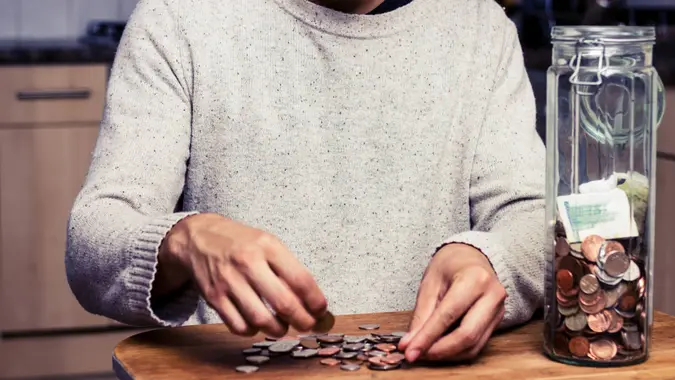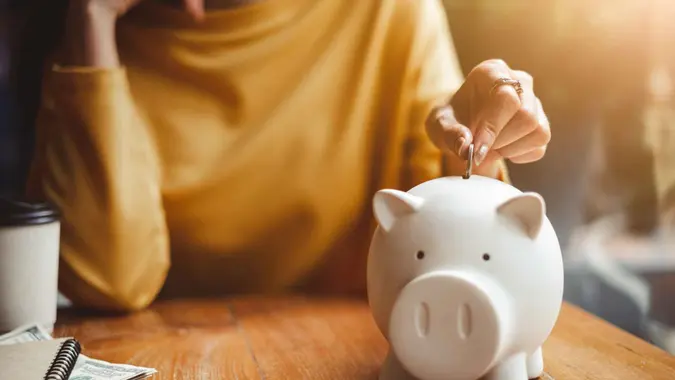Stimulus Checks: The 4 Downsides Nobody Talks About

Commitment to Our Readers
GOBankingRates' editorial team is committed to bringing you unbiased reviews and information. We use data-driven methodologies to evaluate financial products and services - our reviews and ratings are not influenced by advertisers. You can read more about our editorial guidelines and our products and services review methodology.

20 Years
Helping You Live Richer

Reviewed
by Experts

Trusted by
Millions of Readers
After the financial hit of the COVID-19 Pandemic, many people received stimulus payments. As talks of yet another recession loom under President Donald Trump’s White House administration, conversations around stimulus checks, recovery rebate credits and economic impact payment options have also emerged.
However, the Internal Revenue Service (IRS) announced no widespread stimulus checks other than those pending for 2025. It’s also important to note that Elon Musk seems to have the support of President Trump when it comes to pushing forward the DOGE Dividend stimulus check, but that is still pending.
While providing many benefits to American households, in hindsight there are clear setbacks to sending out billions of dollars in stimulus payments. Here are seven downsides to stimulus checks.
Tax Refund Shock When There Are No More Checks
Many of the tax breaks Americans received have now reverted to how they were before the pandemic. For example, both the Child Tax Credit and Dependent Care Credit went down as well as a decrease in earned income for singles.
They Become Expected During Economic Hardships
Stimulus checks were a big hit with the public, but they shouldn’t be expected during every economic hardship. Stimulus checks were sent out to avoid an unnecessary recession and to pump more money into the economy.
Now, with another looming recession in 2025, people may be hoping for another stimulus boost for their bank accounts. However, for the Federal Reserve to release stimulus checks again, the United States would have to be in a dire economic situation. Factors can include extremely high unemployment rates, low consumer spending or something similar to an economic state akin to the pandemic.
Stimulus Aid Can Help Fuel Inflation
The pandemic wasn’t the first time the government used stimulus aid to help the public. Back in 2008 during the Great Recession, lawmakers used stimulus money to prop up the economy.
Inflation may be a result of this as too much money could be sent out in hopes of economic expansion or stimulating consumer demand. Though there is no straight cause-and-effect line between stimulus checks and inflation, but the connection between today’s high inflation and the largest cash injection in America’s economic history shouldn’t be ignored.
It Doesn’t Make Financial Hardship Go Away
In some circumstances, stimulus aid significantly improved Americans’ financial situation and reduced anxiety and depression. However, some analysts said that hardships would have fallen anyway due to job growth and safety net programs.
Some financial experts and economists argue that stimulus aid only improved the financial situation of Americans living in poverty for a few weeks immediately following the payment before expenditures and bank balances returned to normal. If this is the case, then ultimately it is not a solution because it does not and cannot expand the U.S. economy.
If spending is all it took to grow the economy, then governments would have used this to their advantage all throughout history. More spending can lead to inflation, and when you increase the amount of dollars going into the economy, the price of the dollar (or purchasing power) can fall. As the value of the dollar falls, the price of assets will rise along with the inflation rate.
 Written by
Written by  Edited by
Edited by 

























